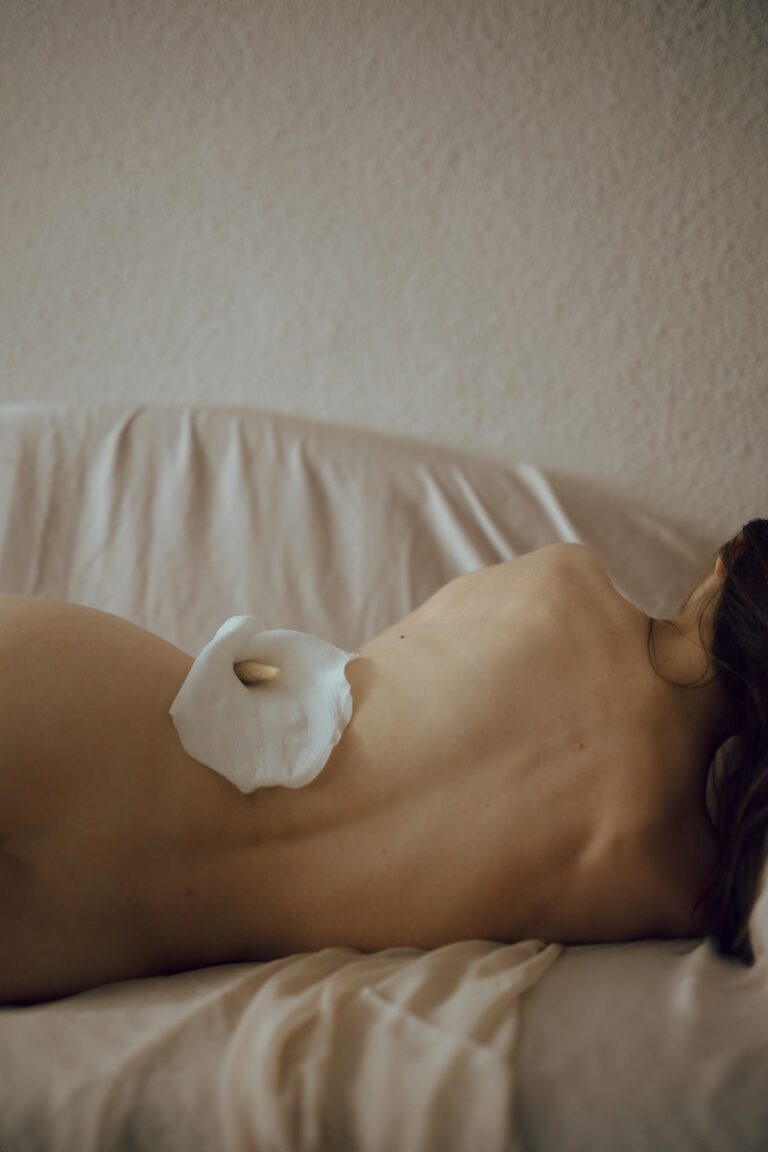Many women who track their menstrual cycle notice that their sexual desire increases in the days around ovulation. This is because the fertile window (the time when a woman is most likely to get pregnant) occurs right before and during ovulation.
This increase in arousal coincides with the production of luteinizing hormone, which is what triggers ovulation. Here are some of the reasons why you may feel more horny during this period:
Increased Blood Flow to the Genital Region
During the follicular phase leading up to ovulation, your body is producing a surge of luteinizing hormone. This is the hormone that signals the ovaries to prepare for egg release and a potential pregnancy. It is also the time when your genital region becomes more sensitive and responsive.
The arousal you feel may be partly due to the increase in blood flow to the penis. Normally, the arteries that supply the shaft of the penis are constricted and only provide enough blood flow to keep the tissue in the corpora cavernosa healthy. When you become sexually aroused, nerve signals in the brain triggered by arousing stimuli like visual imagery or erotic thoughts cause the muscles of the arteries to relax. This expands the blood vessels that supply the penis, causing it to grow and firm up.
This heightened sexual arousal occurs during the mid-cycle peak in estrogen, which usually happens around ovulation. It is not uncommon for women to report a spike in sexual desire during this time.
This is a good time to try new things in the bedroom, but make sure to practice safe sex. You want to avoid any injuries, and you will need to be able to respond to your partner’s arousal. It is also important to note that the increased arousal during this time is only temporary.
Increased Sensitivity of the Clitoris and Labia
The increased blood flow to the genital region and heightened sensitivity of the clitoris and labia lead to more intense sexual experiences. During this time, many women report masturbating more, consuming more erotica and having more arousing sexual fantasies (11). However, this isn’t always the case for all women as factors like stress, hormonal imbalances and certain medications can interfere with these natural processes.
Your clitoris is a small tubercle of erectile tissue that extends from the head of your penis (glans). It has a body (corpora cavernosa) and two legs called crura, which form the V-shaped wishbone shape of the tip of your penis. In between the crura are vestibular bulbs (clitoral horns), which swell with blood during sexual arousal, making your clitoral hood more prominent and causing you to feel more aroused.
Your labia minora are a pair of small cutaneous folds that extend from the front of your clitoral hood and encircle your vulva vestibule. During sexual arousal, they become engorged with blood and appear edematous. The anterior end of your labia minora is linked to the frenulum of the clitoris, which encircles your glans. The posterior ends of the labia minora terminate in the vulva vestibule and Bartholin’s glands, Skene’s glands and urethra.
Increased Libido
Many women who track their menstrual cycles know that sex drive spikes around the time they are ovulating. This is completely normal and comes from the hormonal changes that occur during this time of ovulation. In the follicular phase, which is the first part of the cycle leading up to ovulation, your levels of estrogen and follicle-stimulating hormone begin to rise. As you enter the ovulation window (the fertile windows last about seven days each month), sexual desire and arousal increase due to the increased levels of luteinizing hormone and estrogen.
As you get closer to ovulation, your level of oestradiol will peak a few days before ovulation occurs. This will give you a boost in sexual interest and may also cause your partner to feel more attracted to you as well. During this time, you may find yourself masturbating more or engaging in sexual fantasies with your partner.
As you continue to ovulate, your libido will start to decrease as your levels of oestradiol and luteinizing hormone begin to decrease. This is the same time that many women experience menstrual cramps and other symptoms of PMS, which can lead to a drop in libido as well. If you can learn to love and accept these fluctuations in your sexual desires, you will be able to embrace the full spectrum of your sexuality in a healthy and fulfilling way.
Increased Fertility
In the days preceding and during ovulation, the luteinizing hormone (LH) surges to cause an increase in sexual desire. This libido peak is most intense for six days around the time you are expected to ovulate. Having sex during this window increases your chances of pregnancy, but it is not guaranteed because sperm only live up to five days and can be lost at any point.
LH also increases the sensitivity of the clitoris and labia to touch, making it harder for you to resist your partners advances. If you are having trouble conceiving, try experimenting with sex positions and intensifying your intercourse to increase your chances. Keeping a Fertility Tracker can help you pinpoint your fertile window.
A number of studies have found that women who are ovulating tend to become more “malelike” in their sexual fantasies. This may be because they are thinking about what their partner will look like or what sexual acts they will engage in.
Although increased sex drive isn’t a sure sign of ovulation, it’s worth monitoring if you are trying to conceive. If you don’t experience the heightened sensations of ovulation, it could mean that your body isn’t responding to hormonal changes or that there is an underlying medical issue that needs to be addressed. In either case, it is important to discuss your concerns with your OB-GYN or physician.
See Also:


